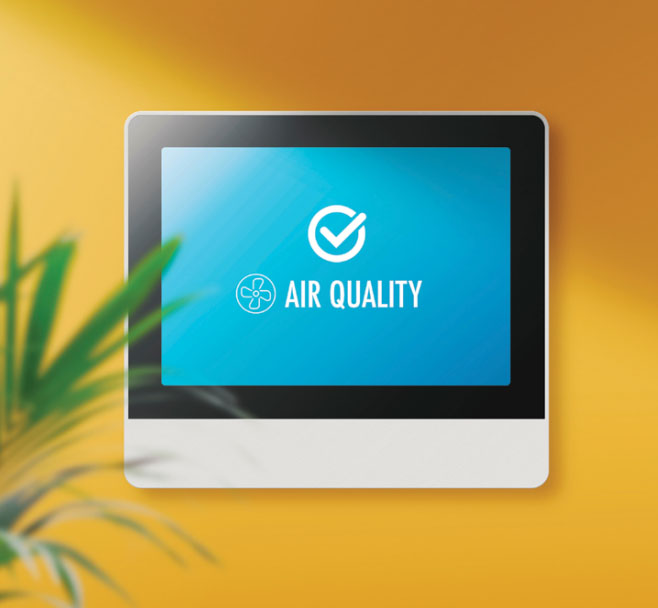New Rochelle Schools are welcoming ESSER-funded solutions designed to ensure that health and safety standards are met in the classroom
By Jeremy McDonald, PE, CEM, LEED AP
 The 10,000-student New Rochelle (New York) School District has taken extensive precautions to provide healthier indoor air for its students and staff. In addition to using high-end MERV 15 filters, cleaning air ducts, and applying surface-cleaning products, the district has installed technology designed to augment its heating, ventilation, and air-conditioning (HVAC) systems to continuously disinfect the air.
The 10,000-student New Rochelle (New York) School District has taken extensive precautions to provide healthier indoor air for its students and staff. In addition to using high-end MERV 15 filters, cleaning air ducts, and applying surface-cleaning products, the district has installed technology designed to augment its heating, ventilation, and air-conditioning (HVAC) systems to continuously disinfect the air.
As COVID-19 demonstrated the ability of invasive elements to evade detection, these modifications became imperative. Health and well-being are priorities for the New Rochelle school system, where a healthy mind and body are recognized as significant factors in student success.
ESSER Funds for Healthier Buildings
Being pragmatic in deciding to invest money wisely, the district used Elementary and Secondary School Emergency Relief (ESSER) Fund money to improve the air quality across the school system.
Under ESSER, state education agencies award subgrants to local education agencies to address the past and present impact of the COVID-19 pandemic on elementary and secondary schools across the United States.
Specifically, the new elements installed within the New Rochelle School District’s HVAC system included an Internet of Things-enabled monitoring feedback loop that detects particulate matter, gaseous and other harmful volatile organic compounds, and toxic elements in real time. These monitoring capabilities allow the district to purify the air so unseen elements—such as microbial organisms and toxic gases like formaldehyde—do not go undetected.
The sensors also actively monitor concentrations of oxygen, ozone, carbon monoxide, and carbon dioxide so the quality of breathable air is maximized.
Simply put, the indoor air quality (IAQ) installation makes the invisible visible so the system’s purification processes can be activated to remove toxic and unwanted elements from the air. The process is dynamic in nature; feedback directs the purification (ionization) intensity to maintain ideal IAQ conditions.
Third-Party Validation Testing
The greatest challenge schools face with indoor air quality is being unable to easily determine whether
the upgrades are making a difference. The only way to accurately assess effectiveness is by testing the air before and after installation and collecting data that make the invisible visible. To solve the problem, the district hired a third-party engineering firm to test and evaluate the product before the district purchased the technology.
The outcome of the evaluation validated the new installation and its effectiveness in reducing airborne contaminants in spaces that are occupied by students, teachers, and school staff alike. Further, the study showed that no harmful by-products were produced. Currently, all 10 schools within the district have been equipped to continuously disinfect the air. In addition, IAQ monitors provide measurements for each school in real time.
Return on Investment
From an investment standpoint, the initiative is a win-win for each school in expenditures and ongoing potential costs versus the goals achieved in delivering and ensuring improved air quality.
When used in conjunction with air-handling systems and unit ventilators, the cost of the new installation is a fraction of other IAQ technologies available on the market. Because the new installation meets the guidelines of the American Society of Heating, Refrigerating and Air-Conditioning Engineers that allow a school to reduce outdoor air by up to 50% while maintaining the same or better indoor air quality, schools with air-handling systems can reduce energy costs. Additionally, very little equipment maintenance is required.
Investments like this offer schools help to pay for any recurring costs from IAQ upgrades.
Preventing Learning Loss
The COVID-19 pandemic revealed air quality issues that had been putting the health and safety of our students and teachers at risk for years. The disruption to normal activities continues today, but public school systems such as New Rochelle are welcoming solutions that are designed to ensure that health and safety standards are met in the classroom.
Going forward, we expect continued discussion around the topics of children, risks, and how much we need to do to prevent generations of lost learning and the negative consequences of childhood education setbacks.
Jeremy McDonald is principal for Guth DeConzo Consulting Engineers PC, in Troy, New York, and an adjunct professor at Rensselaer Polytechnic Institute. Email: jmcdonald@ guthdeconzo.com; Twitter: @JeremyJmcdonald
